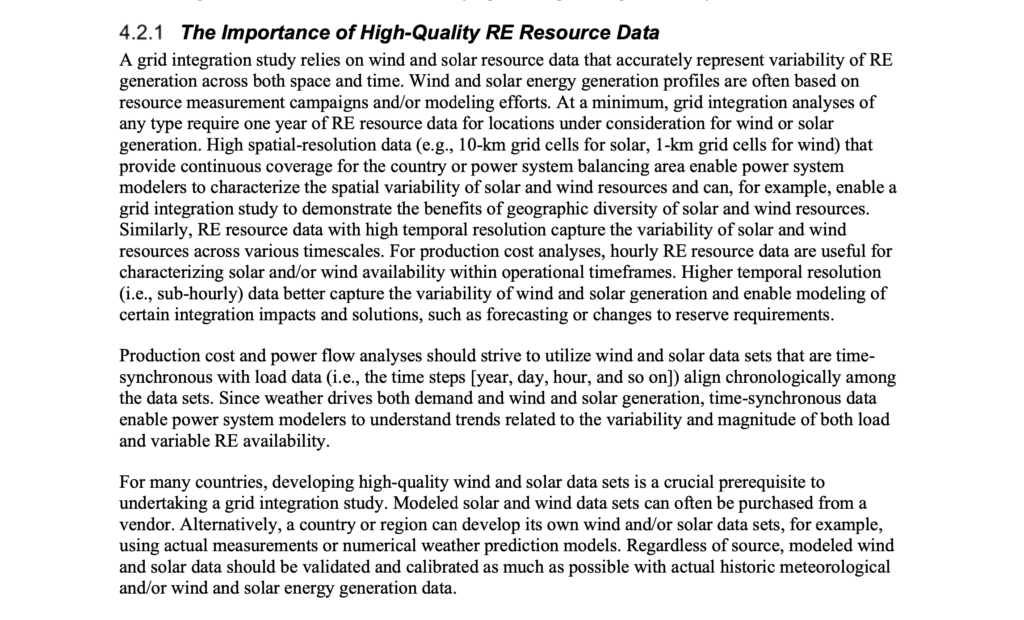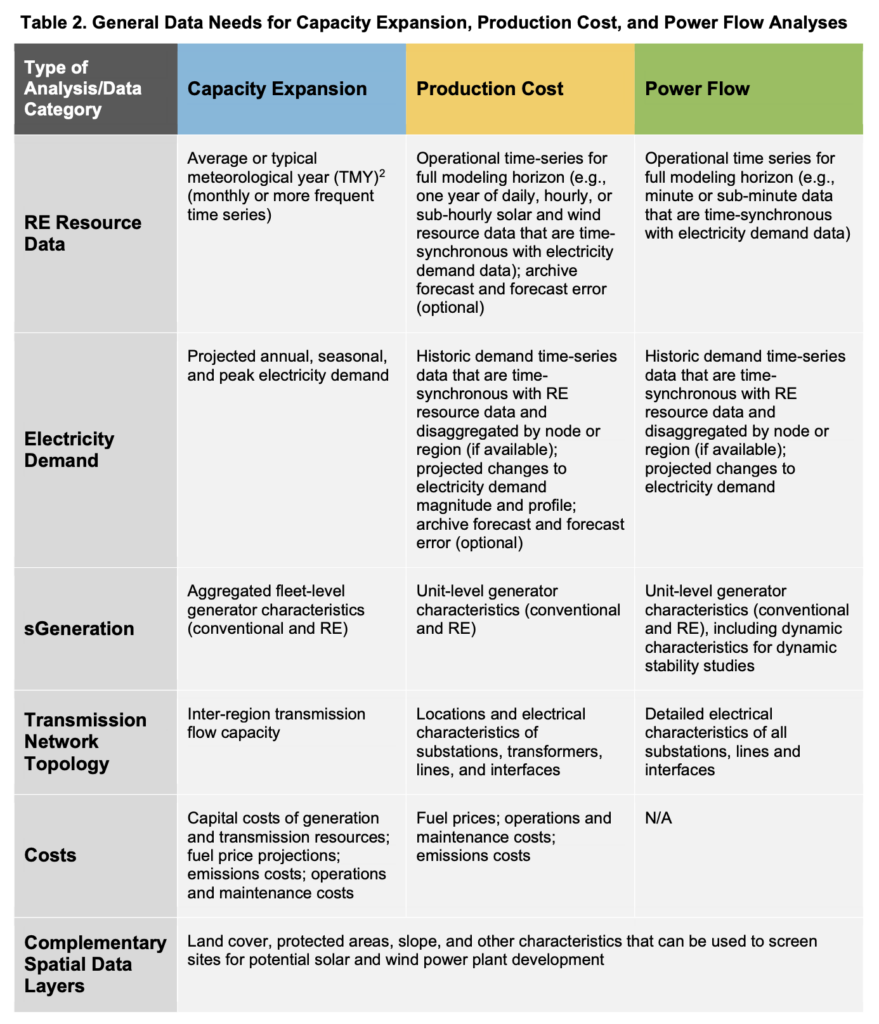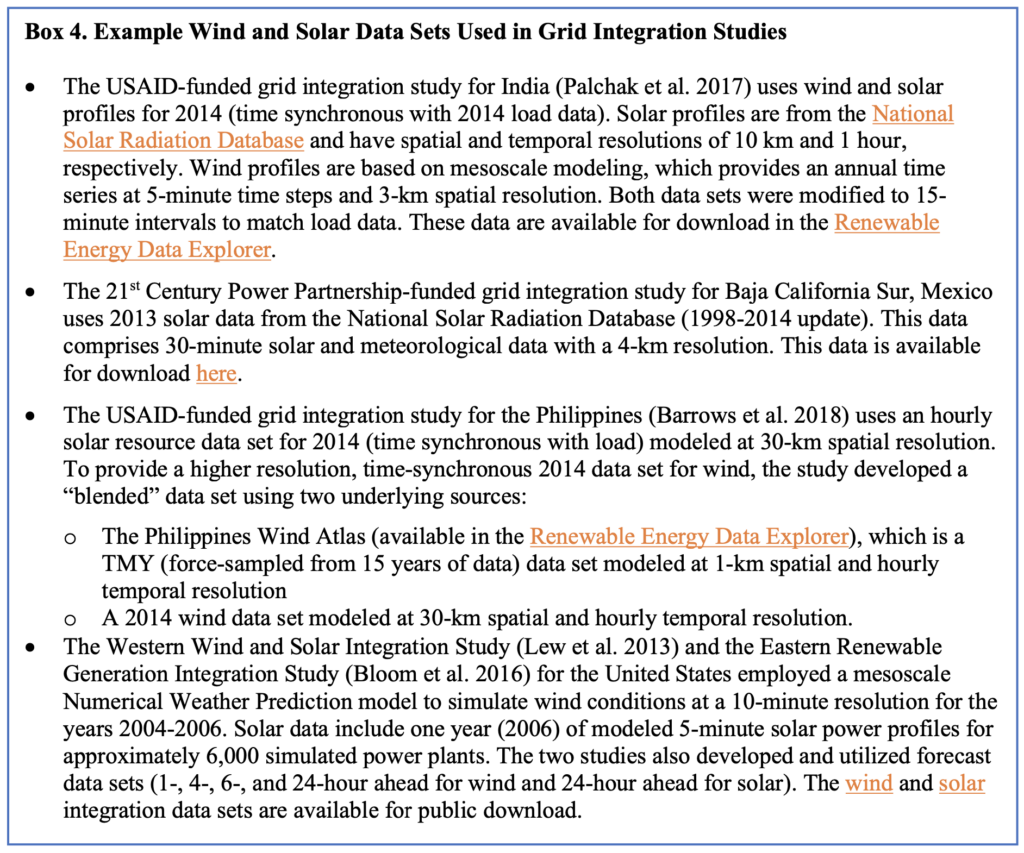A successful grid integration study requires high-quality data and a team with the know-how and capacity to run the power system model. There are a variety of good resources to build your team’s modeling capacity.
Getting the data you will need, however, can be challenging and time consuming. Successfully meeting a grid integration study’s data needs can have big implications on the study’s timeline and budget, and it often depends on the level of engagement and trust among your stakeholders.
Main Points
- Your specific data needs will depend on the type of model(s) you are running. But grid integration studies of any type typically require at least one full year of time-series (e.g., hourly, 30-minute, 5-minute) renewable energy resource data.
- Data can come from a variety of sources including system operators, energy ministries, energy regulators, the private sector and/or commercial vendors.
- It’s possible that the data you need does not yet exist, and that a separate effort will be needed to create it.
First, Read This
A grid integration study relies on high-quality, recent wind and solar resource data that accurately represents the variability of renewable energy generation. In some power systems, this data may not be available. In that case, you may need to develop this data yourself or purchase it from a vendor.
Considering whether or not you can easily access the data you’ll need, and what it might take to get the data if you cannot easily access it, is a valuable activity at this point.

Read Excerpt: Page 15 of Variable Renewable Energy Grid Integration Studies Guide: A Guidebook for Practitioners by NREL.
Now, Check This Out
While renewable energy resource data is extremely important for a grid integration study, it’s not the only data you will need. Other data needs may include historic and projected electricity demand, generation asset and transmission network characteristics and performance, costs, and more. The data you will need depends on your study’s objectives, and the model or models you are using.

Read Excerpt: Table 2 on page 14 of Variable Renewable Energy Grid Integration Studies Guide: A Guidebook for Practitioners by NREL.
Next, See Examples of How Other Studies Secured Their Data
Securing data can be challenging, but it’s not impossible. There are a variety of free and/or easy ways of getting getting data.

Read Excerpt: Box 4 on page 16 of Variable Renewable Energy Grid Integration Studies Guide: A Guidebook for Practitioners by NREL.
Finally, Consider Your Team’s Modeling Capacity
It’s not enough to have the data that you need, you will need the project and technical team to work with and interpret the data and model. Your team, and the Modeling Working Group, will need a variety of skills.
- Technical project management
- Power system and energy sector expertise
- Advanced data management and secure storage
- Data analysis and visualization
- Power system modeling and engineering
- Mathematical optimization
- Renewable energy plant simulation
- Geographic information systems (GIS) and geospatial analysis
- Numerical weather prediction modeling
- Technical report writing, publication & dissemination
Suggested Actions & Next Steps
- Draft a list of your anticipated data needs, based on your study’s objectives and the power system model you expect to use.
- Visit resources like the National Solar Radiation Database, the Renewable Energy Data Explorer, the Global Wind Atlas and the Global Solar Atlas to see if the data you will need is available there. You can also explore more data sets from leading organizations including the World Bank.
- Consult your network, and stakeholders you have identified for your TRC. Where do they suggest you look for the data you will need?
- Take stock of your team’s ability to run a grid integration study. Do you have the capacity needed to coordinate the stakeholders, collect the data, run the model(s), conduct the analyses, and report and promote the findings?
- If you don’t have the capacity you need, how can you enhance your capacity?

